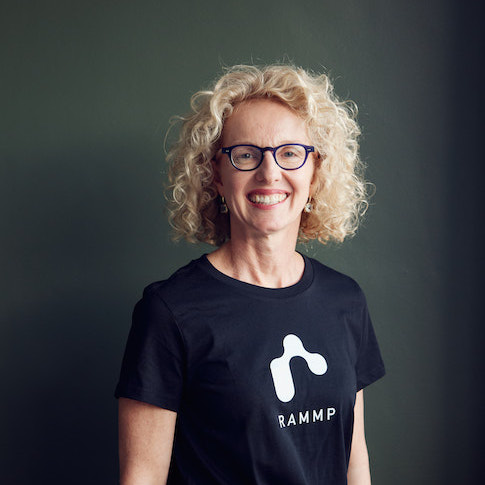
Shopify’s 2023 Trend report warns e-commerce businesses to “brace for a sluggish economy”. We know that recessionary conditions are coming — the question is, what can we do about it?
Google Trends are arguably a reflection of the zeitgeist, a crude insight into the collective minds of over 8 billion people. Peering in, we see that “recession” was last on our minds in 2008, popped its head up again at the start of the pandemic (false alarm) and is back again as of late last year.

Google Trends showing search volume for “recession” (worldwide)
While I personally am an optimist, even for my rosy-coloured outlook it’s hard to ignore the prevailing winds: interest rate rises, supply chain disturbances, wars, escalating costs of power — all of these factors have ripple effects that are going to make their mark on your brand this year.
According to Shopify’s 2023 Trend report, e-commerce brands should brace themselves for a downturn:
The economic outlook forces e-commerce businesses to brace for a sluggish economy (Shopify)
It is human nature to freak out in the face of uncertainty. While I can’t tell you what shares to short, I can with a good degree of certainty, tell you how your customers will change their buying behaviour as we enter recessionary conditions. The reason for this is that as humans, we behave in quite regular and predictable ways, and as anyone who appreciates AI and computer science will tell you, a pattern is a wonderful thing. A pattern allows us to develop systems to optimise situations — indeed, we used these patterns in buying behaviour to build RAMMP to help brands navigate the uncertainties of pandemic and recessionary conditions with more confidence.
How buying behaviour changes during recessionary conditions
We all respond to uncertainty in different ways. Some people acknowledge it, keep calm and carry on, while others freeze like a Canadian winter. The thing that you can bank on, however, is that everyone will respond and shift their behaviour in some way.
As a brand, this means that you can be sure that the spending habits of your target audience will change. How these habits change will directly inform the strategy that you can take to adjust your marketing and/or product design to not only weather, but possibly thrive, during the impending recessionary times.
Following the 2008 downturn, research out of Harvard showed that buyers take on one of four personas during recessionary conditions. The four personas describe how buyers re-apportion their budgets between four types of expenses:
-
Essentials. These are items like food, electricity and other non-negotiables
-
Treats: These are non-necessary indulgences like chocolate, a meal out at a fancy restaurant or a new pair of shoes
-
Postponables: These are items that can be postponed for later, like an overseas holiday or a new car
-
Expendables: These are generally items that are on the “I don’t actually need this” list, such as diamond earrings or Jimmy Choo stilettos
This could mean that some of your previously loyal customers, now consider your product or service “non-essential” — a great example of this is travel: the post-pandemic Christmas rush raised flight prices causing many typical consumers of Canadian ski holidays to opt for more budget-conscious local staycations. On a more practical scale, decisions to replace organic foods with non-organic options, to buy fewer fashion items or replace dinners out with home-cooked meals will likely affect the relationship between your brand and its current target audience until the economy recovers.
Buying behaviours shift during a downturn: here’s how to design for recession personas
The four buyer personas described below provide a clear approach for Marketers and Product Designers to adjust their messaging and offering to meet the buyer budgetary shifts that you will observe as we head into 2023.
Slam on the brakes: create Essential Treats
As the name implies, Slam on the brakes consumers restrict their spending to Essentials only. Note that this shift in buying behaviour may be unrelated to the actual amount of money that this buyer type has available — the reaction to cut all spending to essentials can in many cases be an emotional, not a logical, response.
If your product or service previously fell into the Treat, Postponable or Expendable category, then you can expect that this buyer persona will cease to engage with your brand during a slowdown. However, not all is lost — to engage this category of buyer, you may be able to re-package your product or service into smaller offerings that can pass for Essential Treats.
Pained but patient: create faux Postponables
The Pained but patient buyer persona will completely eliminate their budgets for Postponable and Expendable items. This category of consumers is the most price sensitive of the four, and will quite often reduce their budgets for the Essentials and Treat categories as well.
To engage a Pained but patient buyer, consider creating simpler versions of your product or service that can be offered at a lower price point. From a marketing perspective, it’s important that these scaled-down versions of your offering still have an air of quality and allude to the luxury of the good old days. Pained but patient consumers are price sensitive but don’t see themselves as cheap.
Comfortably well off: create limited edition Postponables and Expendables
The Comfortably well off buyer persona has very little change in their buying habits. However, they are sensitive to the fact that while their world has not changed, the world of those around them may have.
During recessionary conditions, you may be able to generate more revenue from this buyer group by appealing to their sense of entitlement. By offering Postoponables and Expendables at “FOMO” prices, creating exclusive deals and limited edition offerings will activate the principle of scarcity for this buyer persona and appeal to their unrestricted budgets.
Live for today!: focus on lifestyle benefits of Treats, Postponables and Expendables
The golden buyer persona, the Live for Today! group have the belief that their future is so uncertain, and their affect on their future so unsure, that may as well live it up today. In a sense, this category of buyer lives in a state of denial about the changes around them.
In order to attract the Live for today! buyers, ensure that your marketing messages focus on the lifestyle benefits of using your product or service — this category of buyer is looking to maximise their enjoyment of today, they are not looking for practical reasons to buy your product.
Takeaways for Marketers and Product Designers
-
We are heading into recessionary conditions, and these will change buyer behaviour
-
Buyers take on one of four personas during recessionary economic conditions
-
Meet the market during this time by adjusting your marketing message and/or product offering to maintain (or increase) revenue
/RAMMP%20Logo%20Purple%20Horizontal%20NEW.svg)
 Anna Harrison
Anna Harrison